Fantasy Baseball: When Fantasy Value Exceeds Real-Life Value

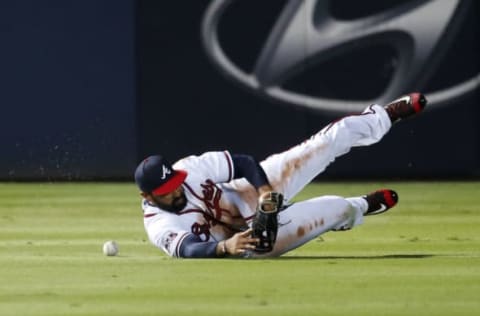
Sometimes fantasy and reality don’t perfectly mesh. Here are players with more value in fantasy baseball circles than in their on-field performance.
I love fantasy baseball. I first discovered the game after a flirtation with fantasy football in Fall 1998. That was okay and all, but fantasy baseball took a sport I loved and turned it into an obsession. I participated in my first draft in 1999 and haven’t looked back.
I remember parts of my first team. Of course Alex Rodriguez, coming off a 40-40 season, was my first pick. Later on I took another power-speed threat in Raul Mondesi. When Mondesi hit two home runs, including a walk-off in extra innings, on opening day, I felt vindicated and was completely hooked.
Fantasy sports is at least partially responsible for the continued popularity and growth of sports. Fantasy football is the most basic and easily accessible, so naturally that is the most popular. The trend started with fantasy baseball, though. In fact, one of the first ESPN 30 for 30 films focused on the birth of the modern concept more than 35 years ago.
While there are some new fantasy games out there that try to incorporate sabermetrics, the original rotisserie fantasy league used only four hitting categories (batting average, home runs, RBI, stolen bases) and four pitching categories (wins, saves, ERA, WHIP). The game evolved to add runs scored for hitters and strikeouts for pitchers, and not much has changed since then. My main fantasy league is still an old-fashioned 4×4 league using only players in the American League.
The simplicity of the categories used makes the game easy enough to pick up and play, but does not necessarily align with reality. The best players in fantasy baseball are not always the best players in real life. Raul Mondesi in 1999 was a great fantasy player. He only hit for a .253 average, but he racked up 33 home runs, 99 RBI, 98 runs and 36 steals: career-highs in those four categories!
Nowadays, we know that a .332 on-base percentage and a below average glove in right field would correspond to a pretty average player. Sure enough, Mondesi put up right around two wins above replacement across 680 plate appearances in 1999. The best pitchers in real life tend to be the best fantasy pitchers, but that’s not always the case for hitters. Here is a lineup of players who are better in fantasy than they are in real life.

Catcher – Stephen Vogt
There’s nothing that really stands out about Stephen Vogt. In 2016 he hit .251 with 14 home runs, 56 RBI and 54 runs scored. His 532 plate appearances ranked seventh at the catcher position, and the average, home run, RBI and run totals all fall between 10th and 13th among those with 300 plate appearances in 2016.
In all, Vogt finished the season as the 14th most valuable catcher according to the earned auction values tool in the Rotowire fantasy baseball draft kit. While this may not be setting the fantasy baseball world on fire, Vogt was very valuable in two catcher leagues or AL-only leagues.
In terms of real-world value, Vogt falls a bit short. His .305 OBP is a detriment on offense, and there’s nothing special about his defense. The biggest downside to Vogt, however, comes from a complete inability to frame pitches. Only J.T. Realmuto and Salvador Perez were worse among full-time catchers in 2016 according to StatCorner.
Vogt was 14.4 runs below average with his pitch framing, which over the course of a season would translate to costing his team nearly a win and a half. Vogt registered around two wins above replacement according to FanGraphs and Baseball Reference. However, Baseball Prospectus, which places a heavier emphasis on pitch framing in its Fielding Runs Above Average calculations, had Vogt as merely half a win above replacement level.
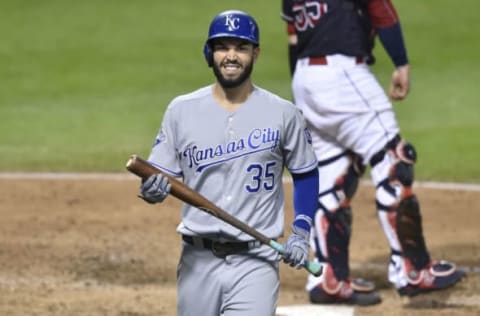
First Base – Eric Hosmer
Eric Hosmer is a pretty good player, right? He finished 2016 with a .266 batting average, 25 home runs, 104 RBI, 80 runs and five steals. Among qualified first basemen (502 plate appearances), Hosmer ranked 11th in average, 14th in home runs, fifth in RBI, 14th in runs and eighth in steals. He was an easy top-15 option at the position last season.
Deeper inspection shows that not only was Hosmer not tremendously valuable, he was below average. His OPS+ of 101 was about as close as you can get to average, and is certainly below the level a team needs out of its first baseman.
Hosmer has a reputation as a good defensive first baseman, but the statistics simply don’t back it up. He won three consecutive gold gloves from 2013-2015, but was about average in this time period. Last season Hosmer regressed significantly.
FanGraphs had Hosmer as the first baseman with the most negative defensive value in 2016, and the third worst defensive value among all players. Because of this Hosmer rated below replacement level. Baseball Reference was not as harsh, as Hosmer managed one win above replacement by their calculations. Hosmer is a player you want on your fantasy team, but he needs to be much better in his walk year of 2017.
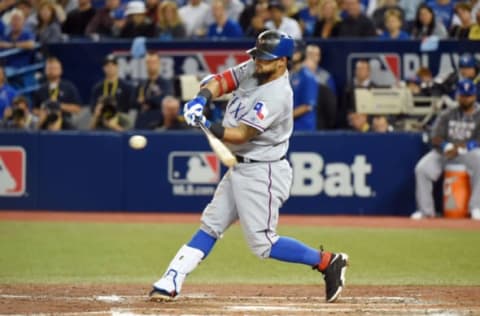
Second Base – Rougned Odor
Rougned Odor broke out in a big way in 2016 at the age of 22. He hit .271 with 33 home runs, 88 RBI, 89 runs and 14 stolen bases in a potent Texas Rangers lineup. Out of 21 qualified second basemen, that average was only 13th, but the runs ranked 10th, steals were eighth, RBI placed fifth, and homers trailed only Brian Dozier and Robinson Cano. All together, Odor was safely in the top 10 at second base.
Odor has seen his counting numbers steadily increase in his three seasons, but one thing he hasn’t learned is how to take a walk. In fact, his walk rate of 3.0 percent was lowest among 146 qualified hitters. In 632 plate appearances, Odor drew only 19 walks! So, despite a .502 slugging percentage, Odor’s OPS could not crack .800.
Defense is not a strong-suit for Odor, so his value comes entirely from his bat. Despite the power surge (his home run total more than doubled from 2015 to 2016), Odor’s minuscule walk rate deeply dampens his value. In fact, FanGraphs and Baseball Prospectus both deemed Odor more valuable in 2015 than in 2016!
Do not let this deter you from using an early pick or spending big to make Odor a part of your fantasy team. At 23, Odor is still gaining strength. He is a fly-ball hitter in the Texas heat with an easily sustainable 17.0 percent HR/FB rate. His below-average .297 batting average on balls in play suggests that the batting average may have room to climb. The Rangers lineup is just as strong as it was last year, which will help out across the board.
Odor is a fantasy stud, but with a walk rate and defense that aren’t improving, his real-world value will never match his fantasy value.
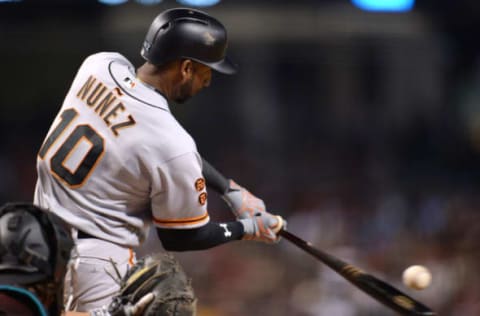
Third Base – Eduardo Nunez
The man who was once supposed to take over for Derek Jeter at shortstop in New York finally had his career breakthrough in 2016. Between his time with the Twins and Giants, Nunez hit .288 while shattering previous career highs with 16 home runs, 67 RBI, 40 stolen bases and 73 runs. He cooled down significantly in the second half with a .244 batting average and .654 OPS, so a fair amount of regression is to be expected.
Another top 12 finish at both shortstop and third base might be too much to ask for in 2017. However, while some of the pop may fade, Nunez will still be able to provide plenty of fantasy value with his speed and respectable batting average. Don’t reach for him, but take Nunez for that stolen base threat and multi-position eligibility.
Nunez’s bat plays much better at shortstop than it does at third base, but the Giants already have a much superior defender in Brandon Crawford. Nunez is adequate with the glove, but teams generally need more offense out of the third base position than a .758 OPS, which Nunez provided in both 2015 and 2016. Because they’re the Giants, though, there’s still the possibility of Nunez again providing real value in 2017.

Shortstop – Marcus Semien
Yes, Marcus Semien only had a .238 batting average in 2016, better than only two qualified shortstops. Those who had the pleasure of owning him on their fantasy teams know that Semien made up for this with 27 home runs. Only Manny Machado and Brad Miller hit more among shortstop eligible players, and both of them will be playing other positions in 2017.
Semien also finished in the top 10 at the position in runs (72), RBI (75) and stolen bases (10). That batting average should come up as well this coming season. Semien was extremely unlucky in 2016, with a .268 batting average on balls in play, down from .312 in 2015. If the batting average makes its way back above .250, Semien will be a tremendous fantasy asset.
In the real world, Semien isn’t a bad player. His defense isn’t as bad as his high error totals would suggest, and an OPS+ around 100 is good for a shortstop. Semien’s skill set just isn’t a natural fit for pitcher-friendly Oakland Coliseum. In 2016 Semien had 17 home runs and 51 RBI on the road versus just 10 home runs and 24 RBI at home. It’s not necessarily that Semien has less real-life value than fantasy value, it’s that Semien has less real-life value to the Athletics.
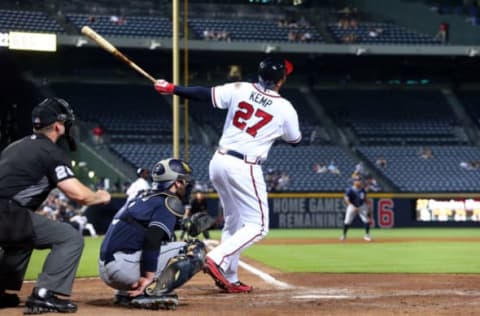
Left Field – Matt Kemp
It’s easy to overlook Matt Kemp, even in fantasy circles, because he no longer steals bases. We’re pretty far removed from Kemp’s second-place MVP finish in 2011 when he hit .324 with 39 home runs, 126 RBI, 115 runs and 40 stolen bases. We’re even further removed from the 8+ wins above replacement.
Between the Padres and Braves in 2016, though, Kemp put together a very, very strong fantasy campaign. His average was down to .268 and he stole just one base, but the 35 home runs, 108 RBI and 89 runs were all the highest they’ve been since that 2011 season. The total package was actually good enough to place comfortably within the top 10 of full-time outfielders!
While Kemp is still a valuable fantasy commodity, his contract remains an absolute albatross. Kemp is owed $21.5 million each of the next three seasons as part of the eight-year extension he signed following the 2011 season. A fraction of this will be picked up by each the Dodgers and the Padres, but the Braves are still on the hook for more than $15 million per year.
That wouldn’t be so bad if Kemp’s fantasy value carried over to his true on-field performance. As you can probably guess by now, it doesn’t. Kemp is an atrocious fielder. Only J.D. Martinez provided more negative defensive value in 2016, according to FanGraphs. This isn’t going to get better, either: as bad as Kemp was in right field the past few seasons, he was even worse in left field where the Braves have no choice but to stash him.
Combine that horrid defense with a 5.4 percent walk rate that was Kemp’s lowest since 2007, and you have a player who is closer to replacement level than to average. There may be no bigger gap between fantasy value and real value than what you see with Matt Kemp.

Center Field – Charlie Blackmon
You knew it was only a matter of time before we had a Colorado Rockies hitter on this list. Charlie Blackmon has been fantasy gold the last two seasons. In 2015 he swiped 43 bases. That’s about the only area that didn’t improve in 2016, when Blackmon hit .324 with 29 home runs, 82 RBI, 17 stolen bases and a mammoth 111 runs scored.
That batting average was best among all outfielders in 2016, not just center fielders. Among full-time outfielders, the only players to return greater value than Blackmon last season were the duo of both fantasy and real-world royalty that are Mike Trout and Mookie Betts. The batting average is likely to slip closer to .300, as Blackmon’s .350 BABIP from last season is likely not sustainable. As long as Blackmon remains atop the Colorado lineup, the counting numbers will all remain elite.
There is nothing wrong with Blackmon as a player, and many teams would love to have the outfielder if he’s made available in a trade. But his walk rate isn’t the highest and his defense in center leaves something to be desired. All I’m saying is that Blackmon is not one of the 20 best players in baseball. Real-world value not aligning with fantasy value does not mean that Blackmon isn’t still a valuable commodity.
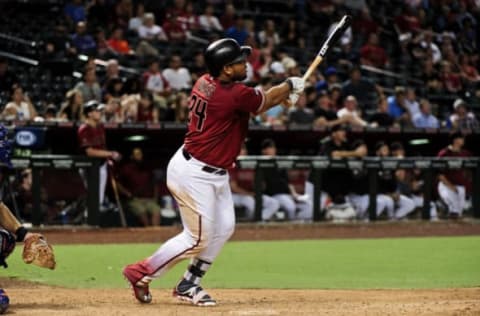
Right Field – Yasmany Tomas
Yasmany Tomas had a nice little fantasy season in 2016! The second-year outfielder from Cuba hit a respectable .272 with 31 home runs, 83 RBI, 72 runs scored and a pair of stolen bases. Playing in Chase Field and just 26 years old, those power numbers are real. Even if the 25.0 percent HR/FB rate (equal that of Chris Davis) regresses, the 41.0 percent hard-hit rate will keep the line moving.
Another player with a 41.0 percent hard-hit rate in 2016 was J.D. Martinez. Martinez’s batting average on balls in play was .378, while Tomas’s was .310. There might thus be room for growth in that .272 batting average. Unfortunately there is something else Tomas has in common with Martinez: neither player’s team should allow them on the field with a glove.
Tomas is a tremendous defensive liability. He detracts so much value on defense that despite a .820 OPS (110 OPS+), Tomas rated below replacement level according to all three of FanGraphs, Baseball Reference and Baseball Prospectus. His fraction of a game below replacement level in 2016 was actually an improvement over his nearly game and a half below replacement level in 2015.
The Diamondbacks can stomach the defense when paying Tomas a combined $6 million for the past two seasons, but Tomas is owed $48.5 million through the 2020 season. Perhaps a move to left field on a full-time basis with the return of David Peralta is what it will take to turn Tomas around. Don’t count on it.
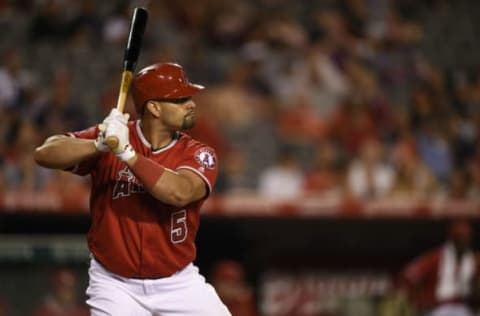
Designated Hitter – Albert Pujols
We’re so sorry, Uncle Albert.
A plus defender at first base for much of his career, chronic foot trouble has relegated The Machine mostly to DH duties. The three-time MVP with the Cardinals can still hit the ball out of the park, but Pujols is a shell of his former self. There is probably a couple seasons of solid fantasy value left in the tank, so let’s focus on that first.
More from Call to the Pen
- Philadelphia Phillies, ready for a stretch run, bomb St. Louis Cardinals
- Philadelphia Phillies: The 4 players on the franchise’s Mount Rushmore
- Boston Red Sox fans should be upset over Mookie Betts’ comment
- Analyzing the Boston Red Sox trade for Dave Henderson and Spike Owen
- 2023 MLB postseason likely to have a strange look without Yankees, Red Sox, Cardinals
Pujols hit .268 with 31 home runs, 119 RBI and 71 runs scored, even throwing in four stolen bases as a little bonus. The RBI total was fourth-best in the majors last season, and as long as Pujols hits behind the likes of Yunel Escobar, Kole Calhoun and Mike Trout, the RBI total will continue to climb and Pujols will remain a cheap fantasy asset.
There’s still fantasy value, but is there real-world value? Likely not in Pujols’s on-field performance. He’s at the point where he’s producing maybe a win above replacement per season. A walk rate that never fell below 9.4 percent in 11 years in St. Louis hasn’t risen above 9.0 percent in five years with the Angels. The home runs are still coming along, but season doubles totals that reached 50 as recently as 2012 have fallen below 20.
Pujols is owed $140 million in base salary over the next five seasons and has a full no-trade clause. The Angels have no choice but to continue penciling Pujols in the lineup, as the best way to recoup some of that sunk cost is through marketing. Pujols will reach 3,000 hits some time in early 2018. 763 home runs is still in reach if he can manage better than 34 per season, and even if he doesn’t, another season to continue the chase is a definite possibility. An even more attainable goal would be career RBI 2,298, which would pass Hank Aaron. Pujols needs fewer than 100 per season to reach that total by the end of his current deal.
Next: MLB to Test New Extra-Inning Rule
Sadly, a more representative career milestone is one that he will reach this season. Pujols will break the record for most double plays grounded into around the all-star break. The chase for milestones and records will remind us what Pujols was, but each double play will unfortunately remind us of what he has become.